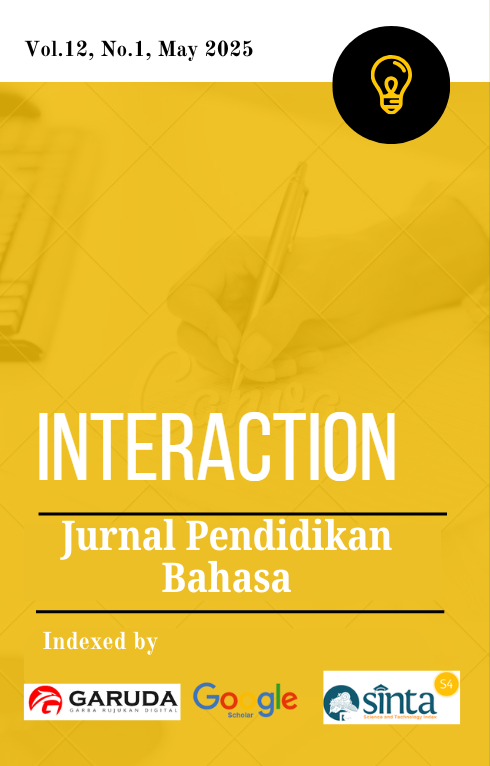Analysis of Illocutionary and Perlocutionary Speech Acts in the Film Agak Laen
DOI:
https://doi.org/10.36232/interactionjournal.v12i1.3924Keywords:
Pragmatics, Illocutionary Acts, Perlocutionary ActsAbstract
Language functions as the primary means of communication. Communication can be defined as an activity of conveying expressions or intentions to the interlocutor. However, it is undeniable that at times, the interlocutor may fail to understand the speaker’s intended meaning. This phenomenon can occur due to several factors, both from the speaker and the interlocutor. To comprehend the intended meaning in an utterance, a pragmatic study can be conducted. In pragmatics, there is a topic that examines the meaning or intention behind someone’s utterance, namely speech acts. Speech acts are classified into three main types: locutionary acts, illocutionary acts, and perlocutionary acts. Film, as an audiovisual communication medium, presents verbal interactions that are interesting to study because they are rich in dialogue, social interaction, and communication context. One film that is particularly interesting to analyze is Agak Laen. This film offers a storyline filled with humor and wit while reflecting distinctive social and cultural dynamics. Based on this, the researcher is interested in conducting a pragmatic study focusing on illocutionary and perlocutionary speech acts. Illocutionary acts are divided into five types: assertive, directive, commissive, expressive, and declarative. Perlocutionary acts are also divided into three types: verbal perlocution, non-verbal perlocution, and verbal-non-verbal perlocution. This research aims to identify and understand the types of illocutionary and perlocutionary speech acts contained in the film Agak Laen. This study employs a descriptive qualitative approach with data collection using the observation and note-taking method. Data analysis follows the Miles and Huberman model, which consists of three stages: data reduction, data presentation, and conclusion drawing.








